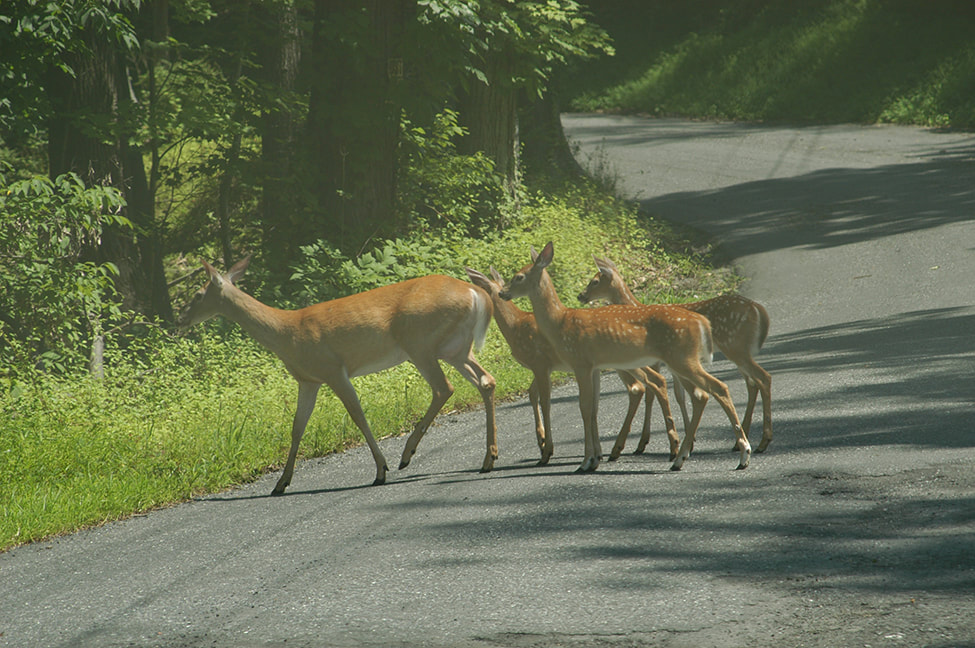 Many homeowners in the suburbs of the Lehigh Valley, even in the city of Allentown, are reporting seeing white-tailed deer fawns feeding on their ornamental bushes and trees in their yards. They’ve become acclimated to living in populated areas since warehouses and housing developments have been driving them out of their normal woodlands. And to their benefit, they won’t be hunted here and will only meet their fate when hit by a vehicle as they cross heavily traveled roadways. Since most fawns are born during May and June in northern environments, fawns born later than this are at a distinct disadvantage because they will not have adequate time to grow and develop before winter arrives again. Fawns in the South, however, are born over a much wider time frame since they aren’t as accountable to Old Man Winter, according to Kip Adams of the National Deer Association (NDA), a conservation group. “The arrival of fawns is cued to align with the flush of spring vegetation because “green-up” provides does with the high-quality vegetation necessary for the final trimester of gestation and for the demands of lactation. Green-up also provides the low-growing vegetation that helps conceal fawns from predators,” said Adams. Healthy fawns say NDA, average 4 to 8 pounds at birth, and they will double that weight in approximately 2 weeks — a period during which they survive entirely on their mothers’ milk. However, by 2 weeks of age rumination begins in their stomach, and they begin to supplement their milk diet with forage. They will triple their birth weight within a month of age. And this change to greenery is being advocated for human diets as we should be following suit by eating more greens and vegetables. NDA goes on to explain that weaning is not an instant switch but a gradual process in which the fawn consumes less milk over time while eating more green forage. Fawns can be completely weaned and survive without milk by 10 weeks of age (2? months), but does often wean them at 12 to 16 weeks (3 to 4 months). It’s not uncommon for hunters to see a May or June born fawn still nursing, or attempting to, in October (20-plus weeks). These fawns do not need the small amount of milk they receive at this time of year, if they get any, and it's believed it’s simply a bonding exercise for the fawn and its mother. While we’re on this topic, did you know newborn fawns lack the ability to urinate or defecate? While nursing, the doe will lick their rectal and genital regions to stimulate them to release their wastes. The doe will then consume the urine and feces so their odors do not attract predators. Now that’s a responsible mother! The doe will continue this behavior for at least 2 to 3 weeks. A newborn’s inability to expel these wastes, coupled with the mother’s protective behavior of consuming them, undoubtedly saves countless fawns from predation. Whitetail fawns are hiders rather than followers like moose calves or climbers like black bear cubs. Their spotted reddish-brown coat, as you may know, is designed to blend flawlessly into a range of forested and open environments. Even as newborns, fawns will nurse and then move away from the doe to bed, that’s typically when good meaning folks think the fawn was abandoned. This behavior removes the doe’s scent from the fawn’s bedding site and is an anti-predation strategy. Twin fawns will also hide separately for their first three to six weeks to reduce the likelihood a predator will find both of them. All of this information underscores the importance of quality habitat and diverse cover types. An abundance and diversity of natural plants in the understory ensures adequate milk and quality forage for fawns, as well as excellent cover to hide them from predators. All of this improves fawn survival, the health of the population, and, ultimately, the quality of your hunting experiences.
0 Comments
Leave a Reply. |
AuthorNick Hromiak has been an outdoors and automotive writer for over 30 years. He's been published in numerous national and state-wide outdoor magazines and newspapers.
|
Proudly powered by Weebly
 RSS Feed
RSS Feed